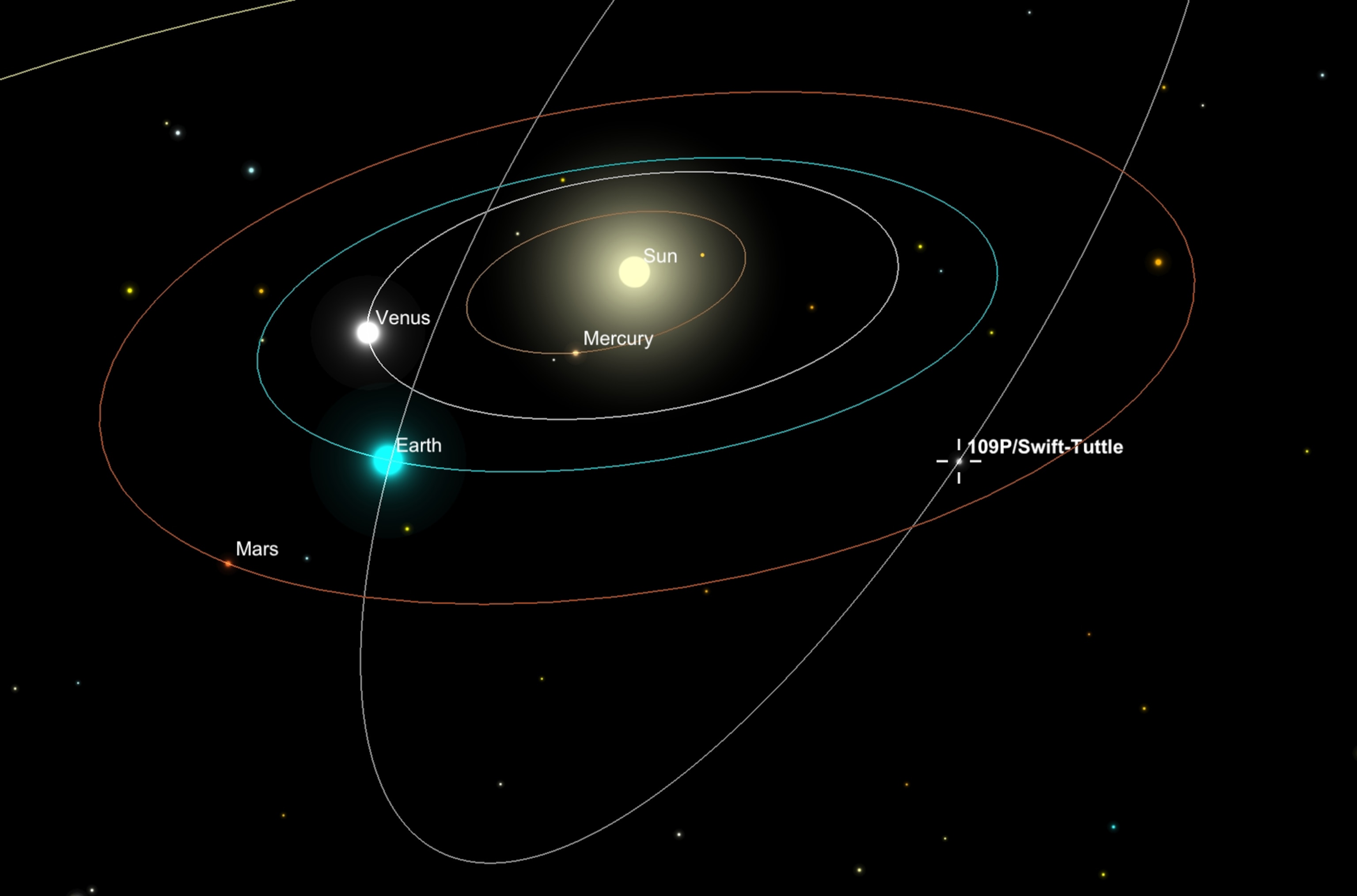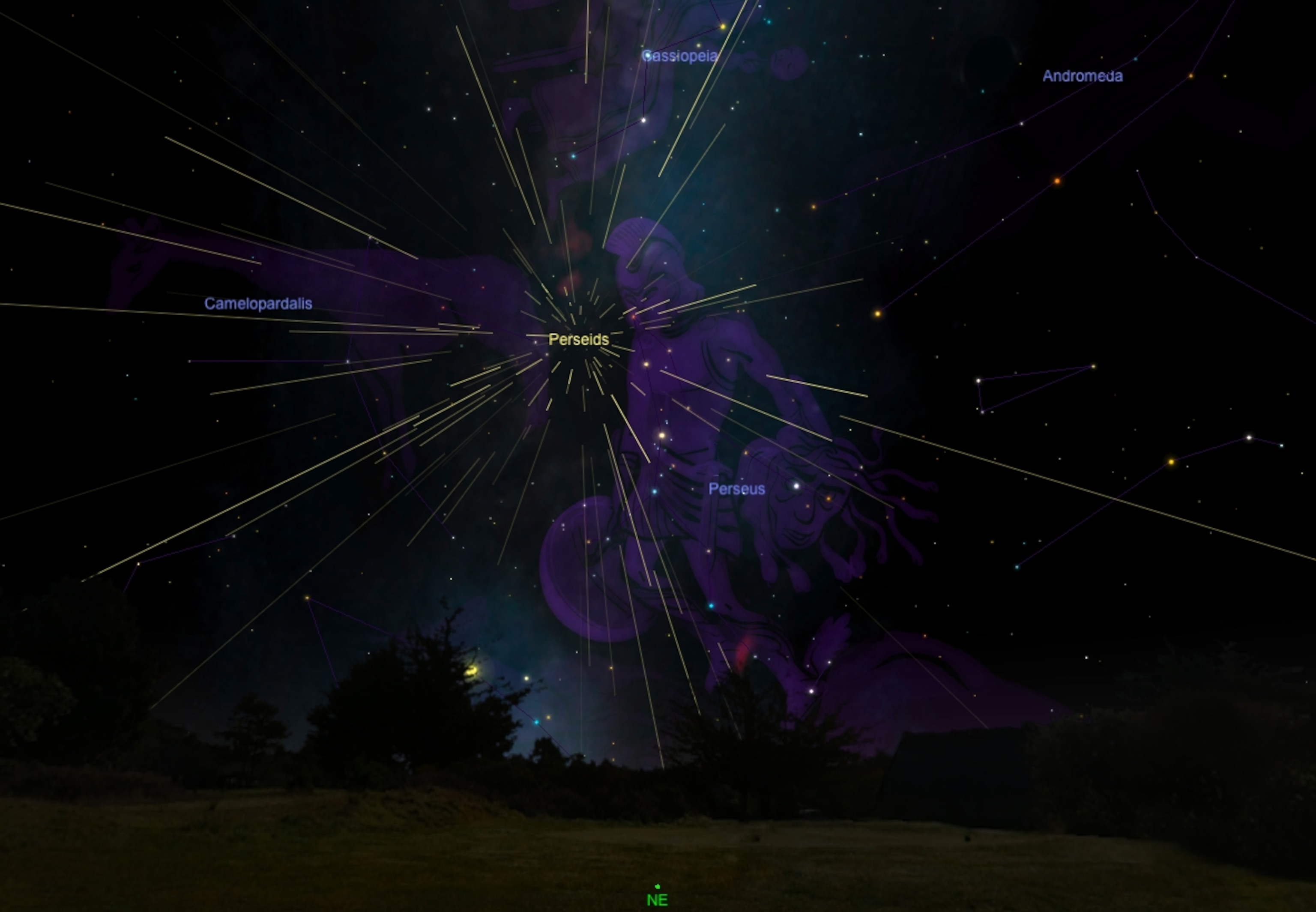
How to See the 2018 Perseid Meteor Shower
Anticipation is high for this year’s sky show, which peaks over a moonless weekend with projected rates of 90 to 120 meteors an hour.
Sky-watchers around the world are eagerly anticipating the arrival of the Perseid meteor shower, which will be at its best from August 12 to 13. Often one of the most impressive spectacles of its kind, the Perseid shower should be especially vivid this year because the sky will be moonless and dark during the peak.
The Perseids are actually visible from July 17 to August 24, although you’ll see only a few meteors an hour throughout most of that time period. The sky show spikes on the peak dates, with an expected average of 90 shooting stars an hour.
Last year, the glare from a gibbous moon dampened the annual spectacle. But for 2018, the dark new moon arrives on August 11, only two days before the Perseids peak. That means the best part of the shower will coincide with just a thin crescent moon, which will set very soon after darkness falls.
If you have clear skies, this deep darkness should deliver a great performance on the evening of August 12, with rates of up to 120 shootings stars an hour visible from countryside locales. Observers in eastern North America, Europe, and the Middle East should get the best seats for this meteor bonanza, since the exact peak is expected to occur at 9 p.m. ET (01:00 UT).
While you can start hunting for Perseids as soon as it gets dark, the best viewing may be after local midnight and into the predawn hours of the 13th, when the skies will be at their darkest and your part of the globe will face the incoming meteor cloud. (See pictures of the Perseid meteor shower.)
Meteors will be visible even under bright suburban skies, but you can expect to see only a quarter to half as many shooting stars. No matter where you are, allow about half an hour for your eyes to adjust to the darkness before you start sky-watching in earnest.
Heroes and Martyrs
The Perseids grace our skies when Earth plows through a cloud of fragments left behind by comet Swift-Tuttle, which last flew near the sun back in 1992. As the comet zooms in from the outer reaches of the solar system, its ices vaporize, and it releases debris ranging in size from sand grains to boulders. The particles get spread along the comet’s orbital path in such a way that Earth crosses the debris field around mid-August every year.

When that happens, the comet pieces slam into our atmosphere at speeds of around a hundred thousand miles an hour, causing the meteors to burn up and produce the brilliant streaks across the sky that we affectionately call shooting stars. (Here’s how scientists think we can create artificial meteor showers.)
Meteors will appear to radiate from the constellation Perseus, the mythical hero, which will rise after local midnight in the northeastern sky.
Despite their Greek namesake, the earliest known record of the Perseids appears in ancient Chinese texts, which mention awe-inspiring views of over a hundred meteors an hour as far back as A.D. 36.
Reported sightings continued throughout the centuries in many other cultures. In Europe, devout Catholics once referred to the phenomenon as the “tears of St. Lawrence,” since the yearly display coincided with the anniversary of the death of Lawrence the martyr. But astronomers didn’t recognize the link between the sky show and comets until the late 1800s.

Souvenir Snapshot
If you want to get a keepsake of this year’s shower, try grabbing a photo. All you need is a tripod-mounted digital SLR camera that can take long exposures of 15 seconds or more.
Use a wide lens to capture as much of the overhead sky as possible, and set your camera to ISO 400 to pick up fainter shooting stars. You can also set a remote timer to eliminate any camera shake.
Keep in mind that taking a picture of the Perseids involves some patience and luck. It can take many minutes before a single meteor crosses your frame, so experiment with images lasting up to 40 seconds each, and keep taking images for as long as possible.
If you're not in a prime position or don't have clear skies, you can still enjoy the show via livestreams online, such as this one from Slooh:
Clear skies!
*This story has been updated to include a livestream of the meteor shower.















